What is fenugreek?
Fenugreek is the ripe dried fruit of an annual fragrance herb plant which belong to peas family called Fabaceae. Both seeds and plant of this herb is used in Indian cuisine. This plant leaves consisting of three small obovate to oblong leaflets and it produced flavourful seeds called fenugreek seed. Its plant is native to southern Europe and the Mediterranean region and mainly cultivated in central and south-eastern Europe, western Asia, Indian, and northern Africa.
Its botanical name is Trigonella foenum-graecum and the name fenugreek comes from two Latin words faenu-graecum meaning “Greek hay” as the dried plant was used as fodder. It is Commercially known as ‘Methi’. Indian Fenugreek comes in two well-known varieties such as ‘Desi’ and ‘champa’.

Pic courtesy:-curry culture
- Fenugreek is considered herb & spices both as the leaves of this plant is consider as a herbs and the seed as a spice . It is a common ingredient in hot curries like stir fried dishes, jalfrezi items, dopiaza dishes and vindaloo dishes etc.
Flavour profile of fenugreek:-
The flavor of fenugreek seeds have a somewhat pleasent bitter taste and peculian odour and flavour similar to celery, maple syrup or burnt sugar and are often used to make medicine and used as a spices in curry powder, pickles and other spices blends etc. The maple note is strong enough to make fenugreek a common flavoring in artificial maple syrup. Fenugreek also has bitter notes that can be overpowering if the spice incorrectly used. Incorrect usage typically involves using the spice in its raw form. It should be pan-roasted to reduce the bitterness and bring out the sweetness. In order to get fenugreek’s flavors to infuse fully, it is best to use it in dishes that call for long cooking. Fresh fenugreek leaves, when used as greens, have a bright but bitter flavor.
- The spice is known as “helba” in Moroccan cuisine, and it’s sometimes an ingredient of the popular Indian spice blend garam masala, along with cumin, cardamom, cinnamon, coriander, and mustard seed.
A brief history of fenugreek –
Its origins reach far back into history. Stemming from the Near East as long ago as 4000 B.C. it is one of the oldest cultivated plant. In ancient times it was mainly used to reduce fever and used in cooking as a food. It is also very old spices in India. Fenugreek is common in Southern Asia, popular in Indian, Pakistani, and Bangladeshi cuisine. It’s an incredibly versatile plant, often used as an herbs, spice and vegetable. It is native to the Mediterranean region, southern Europe, and western Asia.
Today, most of the world’s fenugreek production occurs in India with Rajasthan, a northern state, providing about 80% of what the country produces. However, it can also be easily grown at home.
About its Fenugreek plant & its cultivation in India:-
Threre are two spices of genus Trigonella:-
- Trigonella foenum-graceum commonly known as common methi
- Trigonella corniculata commonly known as Kasoori methi
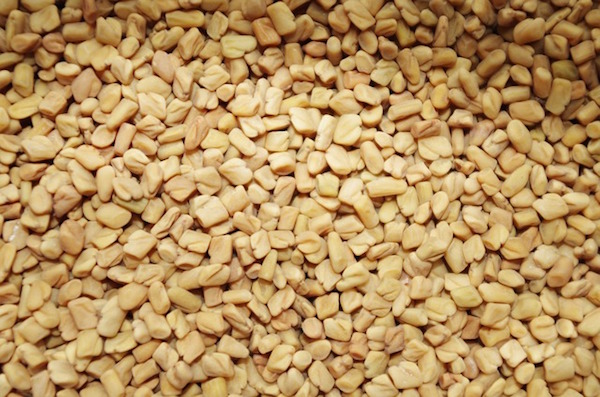
Pic source-blogpreschoolar.com
- The cultivation of fenugreek require moderately cool, frost free and clear sky climate throughout its growing period. It is cultivated in wide variety of soil with rich organic matter such as loamy or sandy soil with good water drainage properties specially on river beds.
- The pH Value of the soil should be in between 6.0 to 7.0. The plant grow to the general height of 03 ft. Its leaves are grey to green in color and has three part leaves. The plant produces white or pale yellow flower bearing sward shaped pods carrying 10-20 methi seeds.The fenugreek seed are small ( 5mm length approx.) hard and brownish yellow in color. Its seed are flattened and have a very characteristic rhomboidal outline.
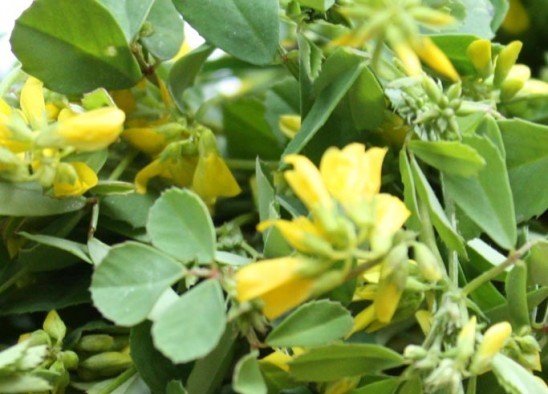
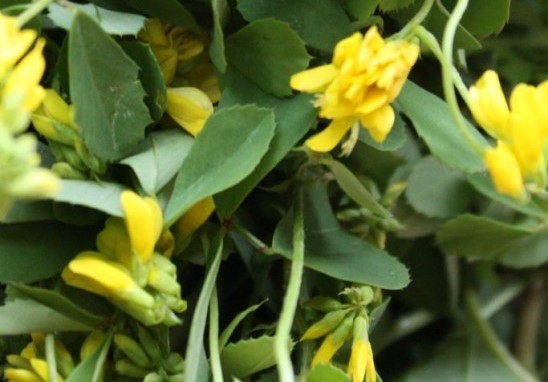
Pic source-seeding india.
- It is grown as a Rabi crop in North India & kharif crop in southern part of India. The best sowing time of fenugreek seed for plantation in North India as a Rabi crop is between Sept to October month and kharif crop during the month of May-June. Cultivation of fenugreek seed during the Rabi crop is much higher as compare to cultivation during kharif crop.
- India is a major producer and exporter of fenugreek. It is grown on an extensive scale in the state like Rajasthan which is the topmost producer of fenugreek in India (77% of total production in India) and 2nd comes to Madhya Pradesh state which is approx 15% of total production in India. Other state also cultivating fenugreek plant are- Gujarat, Uttar Pradesh, Maharashtra and Punjab, Bihar etc.
- It is estimated that it is grown in more than 50000 hectare in land in India and yielding around 45000 tones of fenugreek seed. This spices occupy the third place(3rd place) in area and 4th in the production of this minor spices.
India is exporting only about 10% of its total production. It is exported mainly to middle east countries like Saudi Arabia, Kuwait, yeman etc and other countries like Japan, Sri Lanka, Korea and UK.
Common name in India & around the world
- Fenugreek in English
- Methi in Hindi, Urdu, Punjabi & Bengali
- Medhika or Chandrika in Sanskrit
- Methya in Marathi
- Menthya in kannada
- Vendayam or venthyam in Tamil
- Menthulu in Telgu
- Uluva in Malayalam
- Menthiyam in Nepali
- Hulba in Arabic
- Shanbalilae in Persian
- Tili or Tipilina in Greek
- Shambala in Armenian
- K’u-Tou in China
- Abish in Ethiopian
- Koraba in Japanese
- Fieno Greco in Italian
- Pazhitnik in Russia
- Senegre in French
How methi seed are obtain from its plant.
Desi methi for vegetable purpose is ready for harvesting in 20 days after sowing while kashoori methi or champa methi is ready for harvesting in 25 to 30 days after sowing. The young plant are cut 2-3 cm above the ground for its leaves which is used as a vegetables.
- The stubs continue to produce new stalks and subsequent cutting may be undertaken after 10-15 days. After 3-4 cutting, the fenugreek plant are left to grow for seed purpose. However, it is reported that yield of fenugreek seed is significantly more in case of crop grown purely for seed.
- Methi seed matures and fit for harvesting in 30-35 days after flowering. After seed fully matures, the plants are pulled out along with its root and left to dry in the sun resulting the pods split easily and are thrashed on the floor with stick to separate its seed from its pod. The seed are then winnowed and cleaned and further dried in the sun before it is used as a spices or sold in market.

About fresh fenugreek leaves: –
Fresh fenugreek leaves generally have three small obovate to oblong leaflets which is green in color. It is known as methi leaves or methi ka patta in hindi. The young pods and leaves are eaten as a Vegetable or leafy vegetables such as methi saag, aloo methi ki subzi etc. The young leaves are a salad herb and can added to other salad greens like watercress for a delicious salad. The leaves have a bitter, nutty maple-like taste.
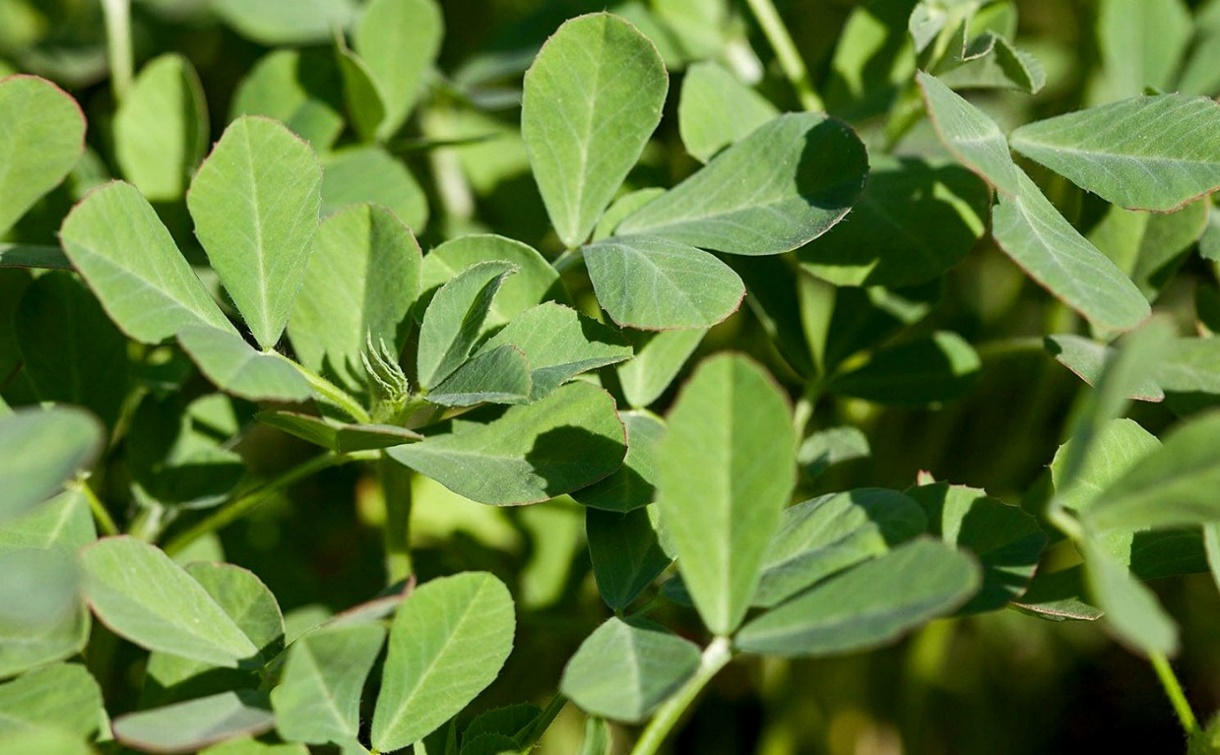
Pic source-Nature bring
- Fenugreek leaves are low in Fat but good source of calcium, Iron ,vitamin A, vitamin B2, copper and magnesium etc. Methi leaves can also help in filling the iron deficiency caused during pregnancy. 100 grams of fresh methi leaves provide us 4.82 grams protein, 8.8 mg iron and 91 mg of vitamin C.
What is kasoori methi?
Kasoori methi is a sun dried form of fenugreek leaves. It is a type of fenugreek plant that grows wild in the ‘Kasur’ region of Punjab, (now part of Pakistan) hence the name ‘Kasuri Methi’. It is generally consider as an Indian herb rather than a spice because dried fenugreek leaves is similar to the other dried herbs like basil, rosemary, thyme etc. Kasoori methi has a strong pleasing aroma and used to enhance the flavour of vegetarian and Non vegetarian dishes.

The taste of kasoori mehti looks similar to the taste of maple syrup because it contains a chemical compound called soloton which is mainly responsible for distinct flavour and taste similar to maple syrup.
About Methi seeds & Nutritional value:-
Fenugreek bears tiny, yellow or white fragrant blossoms in the late summer. Once the flowers are spent, long, thin seed pods appear. These pods contain at least 10-20 small hard yellowish-brown seeds which are smooth and oblong and around 3mm in length size, each grooved across one corner, giving it a hooked appearance. The methi or fenugreek seeds are bitter in taste which can be reduced its bitterness if slightly roasted before using it in cooking.
- Fenugreek seed contains volatile oil, fixed oil & enzyme and also rich in essential amino acid. Its leaves and stem are rich in calcium, Iron, carotene and ascorbic acid.
Methi seed contains high nutritional value like-
- Calorie- 370kcl per 100gms
- Protein-9%
- Fat-10%
- Fibre-18.5%
- Carbohydrates-42.3%
Fenugreek seeds and leaves both are very aromatic and flavorful. Fenugreek seeds are rich in vitamins such as Vitamin A, B6, and C thiamin, folic acid, riboflavin, niacin and it is are a rich sources of many minerals such as copper, potassium, calcium, iron, selenium, zinc & manganese. Fenugreek leaves are also rich source of vitamin K.
Culinary use of Fenugreek seed & Dried fenugreek leaves(kasoori methi)
- Fenugreek is being used both as a herbs and spices in food and in food additives as well as in medicines. Its fresh tender pods, leaves and shoots are eaten since ancient times in India. As a spices fenugreek add flavor and nutritive value to foods. Besides dried leaf powder is also used for garnishing and flavoring variety of vegetarian and Non vegetarian food in India. Fenugreek seed are bitter in taste when raw but once slightly roasted the bitterness cut down.
- Because of their sweet, maple-syrup like smell and flavor, fenugreek seeds are also added to artificial maple syrup, candies, ice cream, beverages, tobacco, soaps, and cosmetics.
- Fresh and dried fenugreek leaves can be used to finish dishes like sauces, curries, vegetable dishes, and soups. Fenugreek seeds can be used whole or ground and used in spice blends such as garam masala. There are several types of masala mixture in india but addition of grounded fenugreek seed balance well with cinnamon, cumin, coriander, bayleaves,clove and mace etc. it is best suited to be added at the end of the cooking in the preparation of curries, lentils or dal, soups etc.
- Fenugreek powder is made from ground fenugreek seeds. This spice comes mostly from the southern part of India. Fenugreek is probably best known to westerners for its use in curry powder & sambhar masala powder. It is also used in the preparation of pork vindaloo, Fish curries.

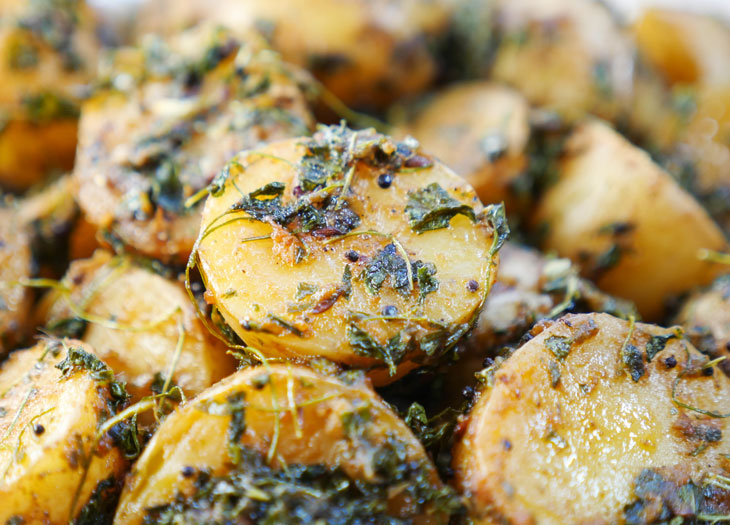
Pic of methi thepla & aloo methi
- Whenever we use fenugreek seeds, it should be slightly pan roast them over medium heat to reduce its bitterness taste and it can also be combine with other strong spices such as coriander, cumin, and paprika before adding it to any dishes. If a dish containing fenugreek seeds and taste bitter then add a squeeze of lemon juice at the end of cooking to balance out bitterness taste from the dish.
- Fenugreek seed is one of the main ingredients of Bengali five spices mixture called panchphoran. It is also used in the preparation of pickles specially mango pickles, mirchi ka achar,Mango chutney.
- Fenugreek seed is tempered in hot oil or ghee and added in the preparation of the vegetarian dishes, dal etc. The best way to use the fenugreek seed in cooking is to put it in hot water to extract its flavour and then the fenugreek water should be used in the dishes. It is also commonly used in preparation of various south indian food such as sambhar, vegetarian food, tempering coconut chutney, tomato chutney etc.
- Dried fenugreek leafs popularly known as kasoori methi in India is mainly used to flavour the vegetarian and Non vegetarian dishes. It is also used in the preparation of several spice mixture. Kasoori methi extensively used in the North indian food such as Punjab food, lucknawi food etc.
- Kasoori methi is also used to flavour the tandoori yoghurt based marination for preparation of various vegetarian and Non vegetarian tandoori dishes or kababs.
- Fresh methi leaves are used in the preparation of several bread like methi thepla, methi paratha, methi poori etc and several hot snacks, Namkins such as kababs, methi muthiya, methi pakora, methi bonda etc.
- Dried fenugreek leaves also appear in the spice mixture called khemli suneli in Georgia cuisine and Iran also used this leaves in the preparation of vegetable dish called ghorme subzi.
- The Ethiopian spice mixture called barbere which is a spice mixture of chile, fenugreek, paprika, ginger, onion powder, cardamom, coriander, nutmeg, garlic, clove and cinnamon used to season many ethiopian dishes such as barbecue ribs,Chicken and pork dishes.
- An Ethiopian clarified butter called Niter Kibbeh which is similar to Ghee are usually season with aromatic spices like fenugreek, cardamom, cumin etc and used in the preparation of stews, braised vegetarian and non-vegetarian dish.
- It is also very popular vegetables in middle east countries where meatless diet are customary for cultural and religious region.In Egypt and Ethiopia, fenugreek is a popular ingredient in the preparation of breads, condiments etc. For example:- Hulba – A spicy Yemeni condiment made from whipped fenugreek. Part of the national dish Saltah. In Egypt fenugreek is locally known as Hulba and in Ethiopia it is knows as abish. In Greek, the fenugreek seed are also eaten raw or boiled with honey.
- In united states, fenugreek seed is used in the preparation of sauce, hearty vegetable bean soup, fenugreek beef stew and as a source of fenugreek extract, the principal flavouring ingredients of intimation maple syrup.
- Fenugreek seed is also used to prepare herbal tea which have several health benefits in improving digestion, regulating blood sugar and for protecting heart issue.
Methi microgreens: –
Methi micro greens contains a variety of beneficial nutrients such as Iron, Magnesium, manganese, vitamin B6 & dietary fibre etc. Fenugreek microgreens are aromatic, juicy, and a staple ingredient in Indian cuisine. Methi microgreens are mainly used in the preparation of heathy salads,sandwichs shakes & smoothies, stir fries dishes, garnishing of several dishes, presentation of the food etc.
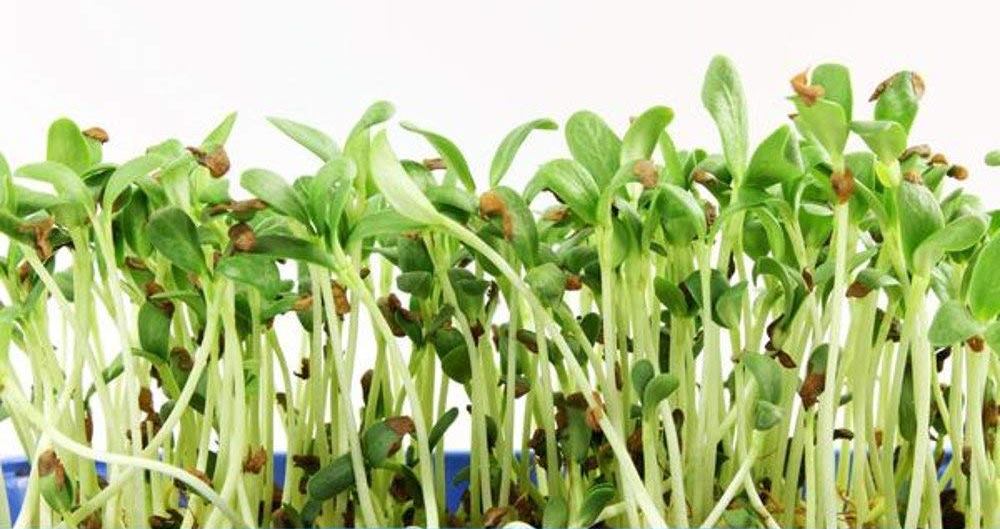
Ayurvedic properties of Fenugreek seed
As per Ayurveda, Fenugreek is considered as an excellent spices used for pacifying Kapha, and in smaller quantities for Vata, but it increases Pitta. It is a warming spice, and contributes the bitter, pungent and sweet tastes.
In ayurveda it is used to enhance digestion and prevent stomach disorders. It is also good for the skin and hair. Fenugreek seeds are used both whole and ground. As with many other ayurvedic spices, it is best to sauté whole or ground fenugreek in ghee before adding it to dishes. Fenugreek combines well with other spices such as cumin, corriander, turmeric, fennel and dried ginger.
Other health benefit:-
A tablespoon of soaked fenugreek seeds should be consumed first thing in the morning empty stomach. If you do not like the taste, you can add them to your dals and curries. Do not consume more than a tablespoon of fenugreek seeds in a day. You should try having the seeds every day for 21 days to see visible results.
- It helps in controlling diabetes & aids in digestion:-Soaked fenugreek seed should be taken early morning before having any meal helps to control diabetes and also helps to keep acidity away which is turn promote good digestion.
- It helps to maintain low cholesterol:- Eating soaked fenugreek seed daily also helps to bring down the cholesterol level to a normal level.
- It is Good for pitta-kapha dominated people:-Methi seeds are hot in nature and thus great for people whose kapha dosha is dominating. Kapha dominated people can have fenugreek in any form – soaked, sprouted, whole or sprouted. People with pitta dominated dosha should have the seeds soaked or have its water. It will help in relieving acidity.

Popular Fenugreek seed brands in India
There are several popular brands which is selling fenugreek seed in Indian market. Some of the popular brands are also selling organic variety of fenugreek seed. The price range in Indian market are in between Rs 300 per kg to Rs 600/-per kg depending upon brand names and quality.
Some of the popular brands are as under-
- Earth root fenugreek seed
- Wonderland & food
- Obbi fresh fenugreek seed
- Vedaka methi dana
- 24 mantra organic fenugreek seed
- Exotica fresh
- Fresh & real
- Nature land organic fenugreek
- Organic India
- Aagam fresh organic methi
- Dadi fenugreek
- Organika methi dana
- Easy bee fenugreek seed
- Santosh food fenugreek seed
- Yuvika fenugreek seed
- Delicious fenugreek seed

Popular kasoori methi brands in India:-
The price range of kasoori methi in indian market are in the range of Rs 600/-per kg to Rs 1000/- per kg depending upon the brand value and quality of kasoori methi leaves. Some of the popular brands are:-
- MDH Kasoori methi
- Pushp kasoori methi
- Everest kasoori methi
- Vedaka kasoori methi
- Bakers kasoori methi
- Ashok kasoori methi
- Rakesh kasoori methi
- Swad kasoori methi
- Sona kasoori methi
- Vishal kasoori methi
- Ruchi kasoori methi
- Rani kasoori methi

